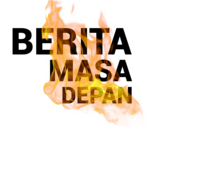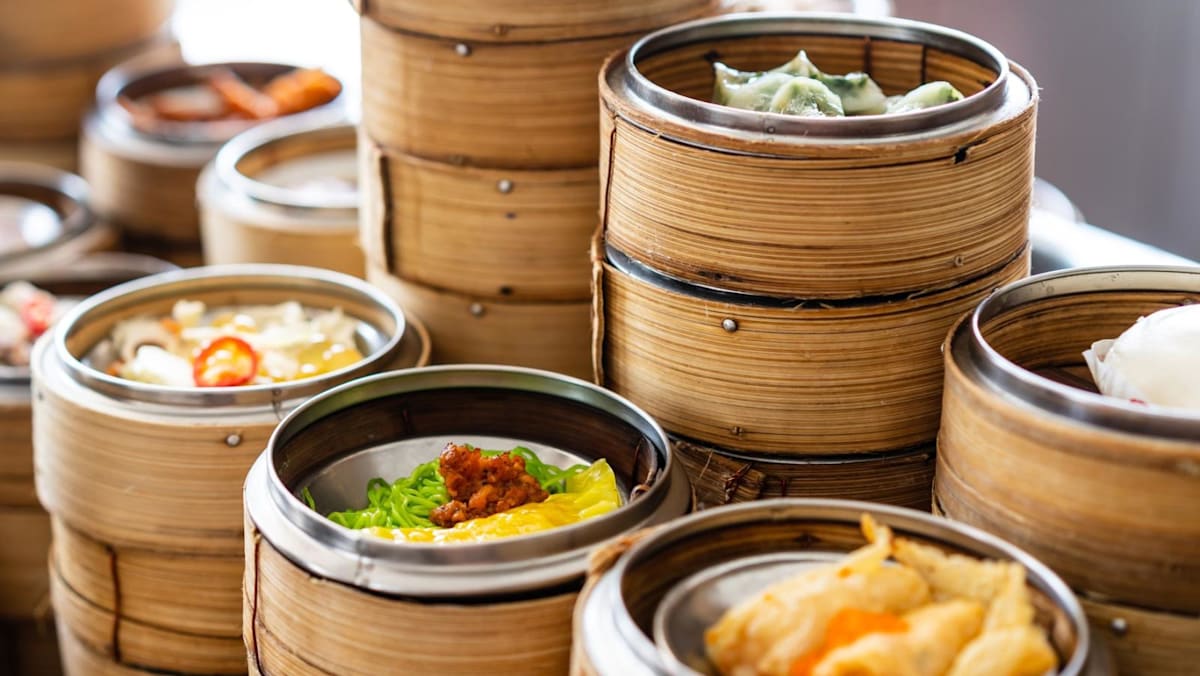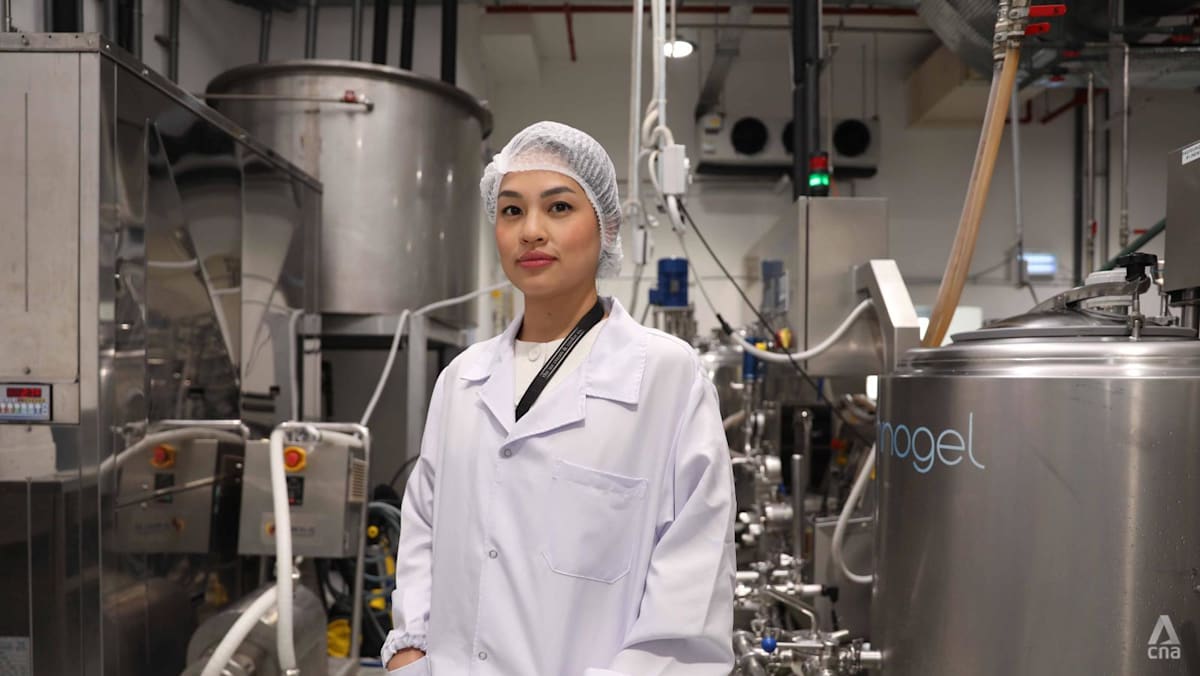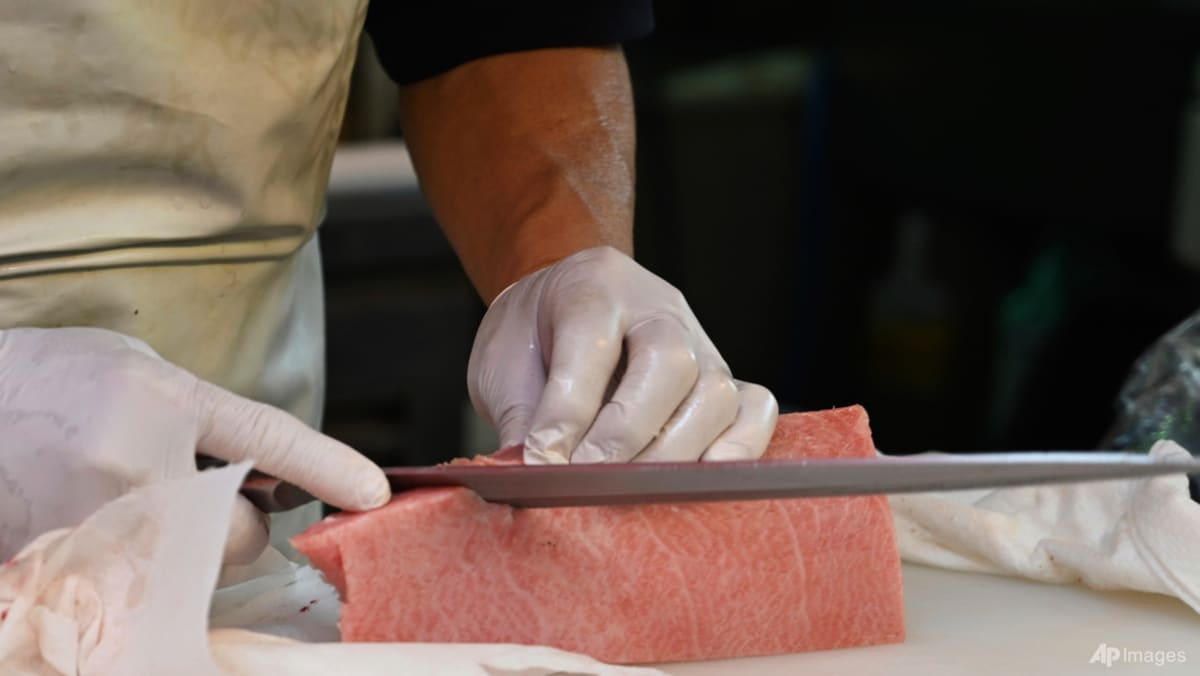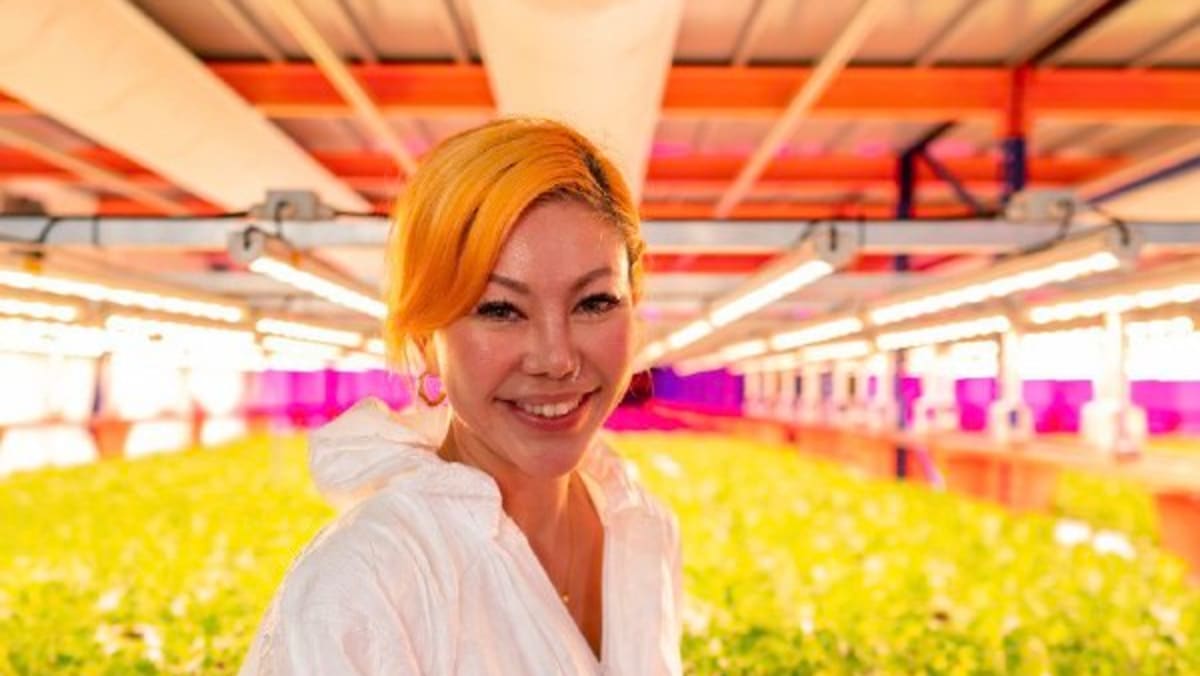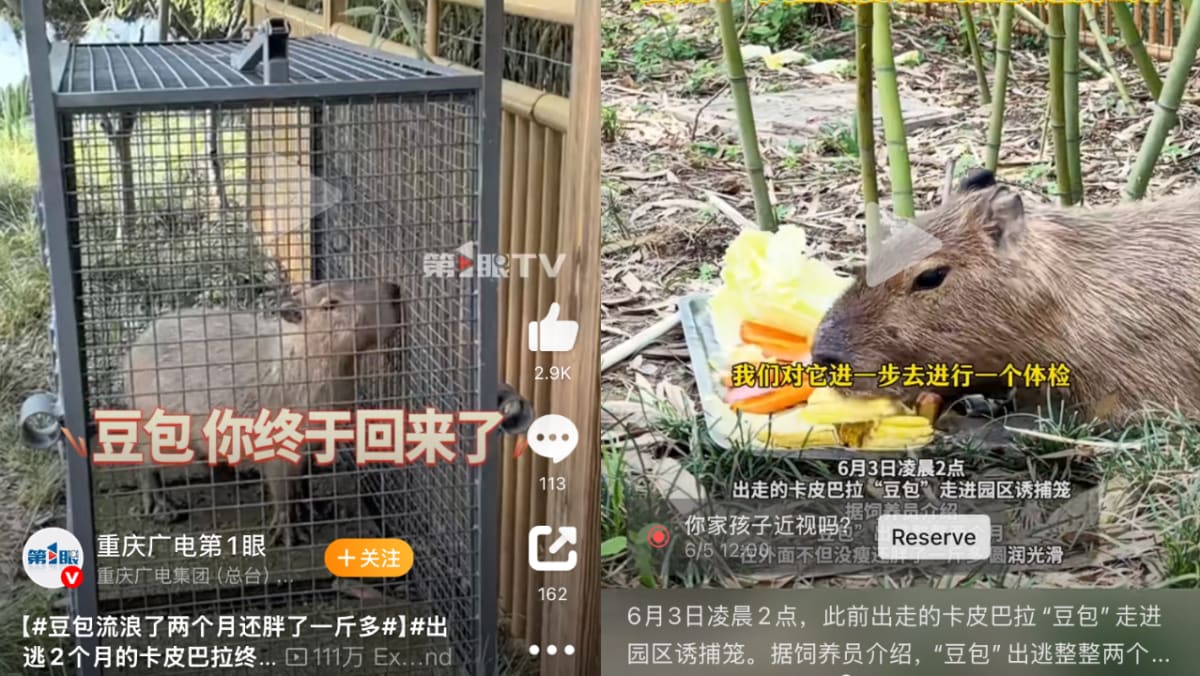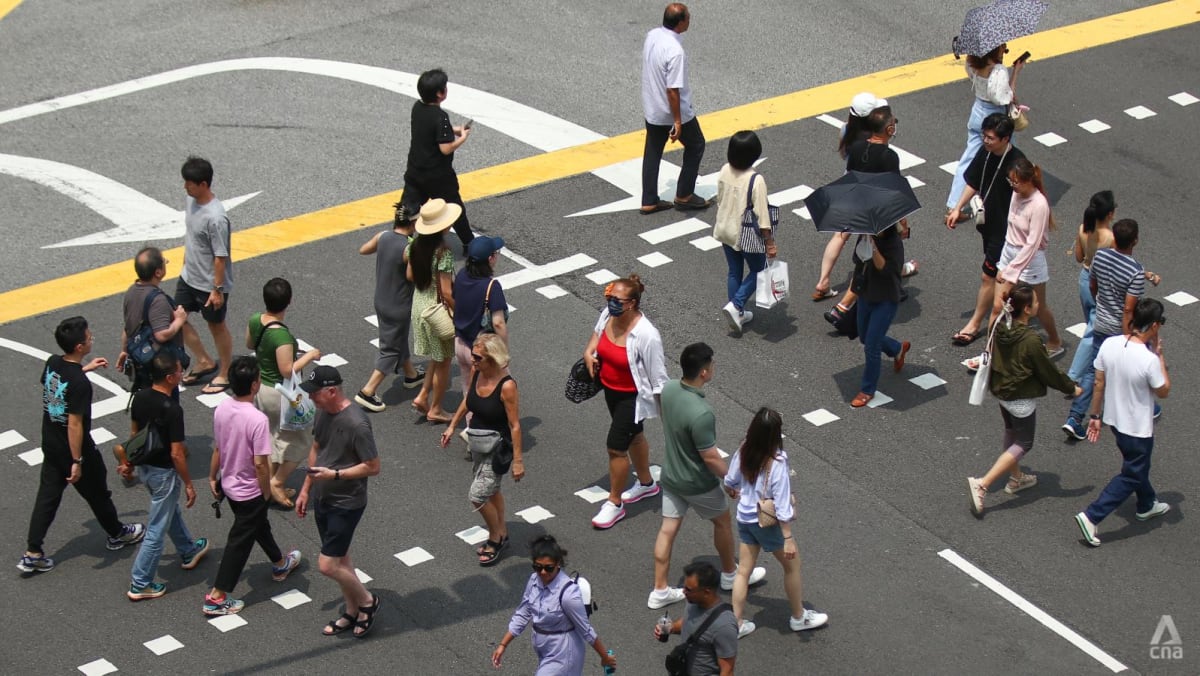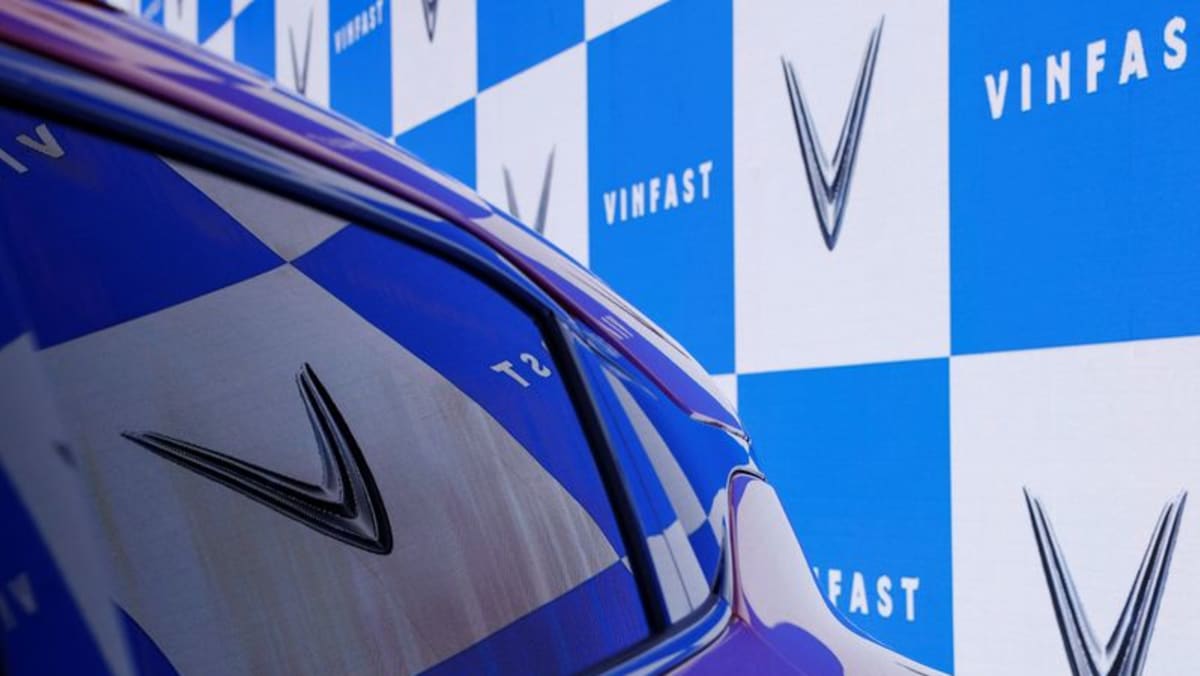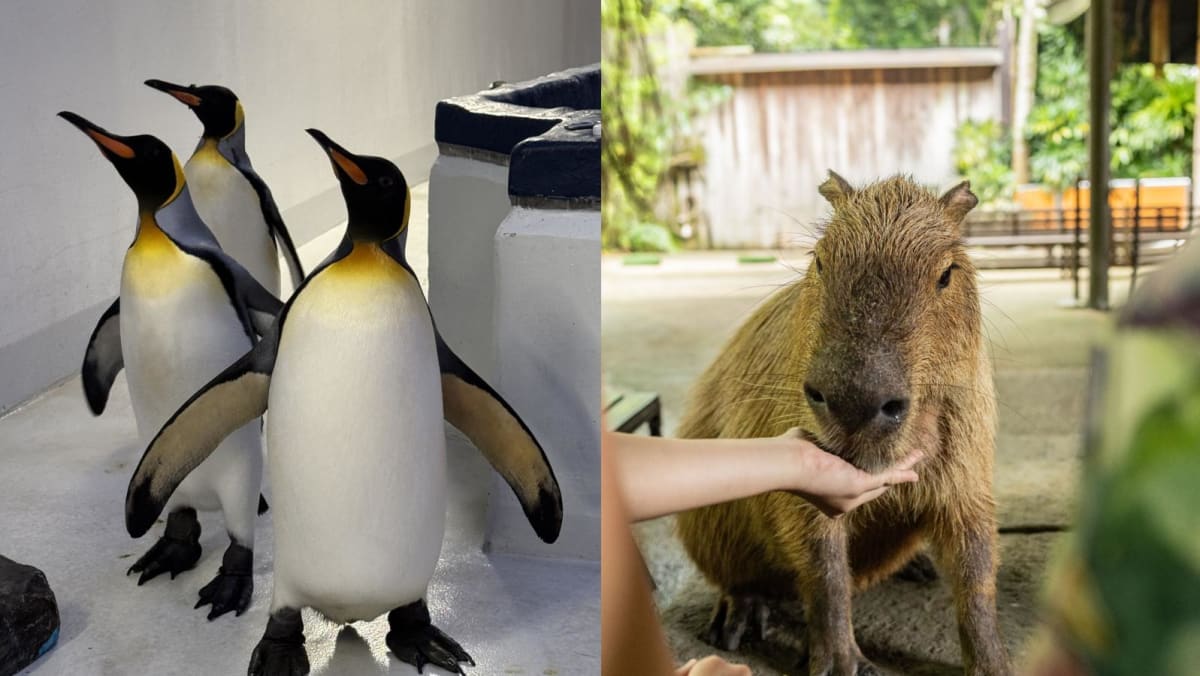BALI: Tucked away in Karangasem, the driest region on the island of Bali, is a prized agroforestry system cultivating the salak fruit.
Also known as snake fruit, it grows in clusters at the base of the salak palm tree, a species native to Indonesia. The fruit's moniker is earned by its reddish brown, scaly and slightly spiky skin.
Inside, the edible white pulp is crunchy, tangy, sweet and slightly acidic.
The island’s largest salak orchards cover nearly 1,500ha across the villages of Sibetan and Jungutan. Together, they make up the Sibetan customary village.
Cultivating the fruit requires the support of shade plants and rainwater collection areas. So, the agroforestry system combines other crops in a five-strata system.
The resulting landscape plays an important role in absorbing carbon, reducing run-off and increasing groundwater filtration.
It also serves as a crucial water catchment area for rice fields stretching some 1,000ha in surrounding villages.
The comprehensive system is the first in Indonesia to be recognised on the list of Globally Important Agricultural Heritage Systems by the United Nations’ Food and Agriculture Organization (FAO).
“People have been practising (this system) to sustain their livelihoods. At the same time, they are working together to also conserve biodiversity and protect nature,” said Rajendra Aryal, an FAO representative for Indonesia and Timor-Leste.
“They are also maintaining their rich cultural heritage in the way of life, which has passed from generation to generation.”
Historical records trace the planting of the first salak palm in the 14th century to Jero Dukuh Sakti, a revered traditional healer and priest. Today, local communities continue to honour his legacy.
Traditional village customs and laws known as awig-awig also function as a guideline to practice the deeply ingrained Balinese philosophy of Tri Hita Karana – harmony and balance with God, others and nature.
"Salak … is a legacy from the past that is carefully preserved because it is a vital source of livelihood for the community,” said I Made Mastiawan, secretary of the Sibetan customary village.
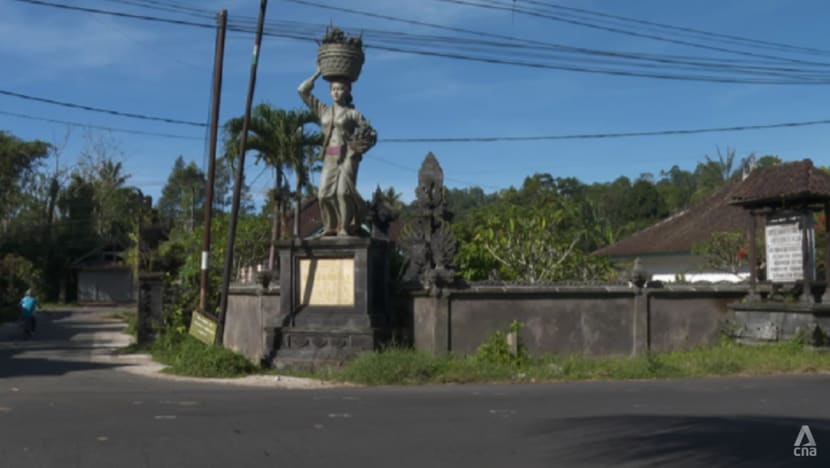 Statue of a woman holding baskets of salak fruit at the village.
Statue of a woman holding baskets of salak fruit at the village.
There are at least a dozen varieties of salak and each is unique.
I Nengah Karsa Winaya, treasurer of the Dukuh Lestari Farmer Group, grows many of them in his orchards.
He soaks the seeds before planting them in polybags. After around six months, when leaves start to grow, they are transplanted to the orchards.
"If the soil is good, it takes about four years but if the soil quality is poor, it may take up to five years to bear fruit," he said.
The most expensive variant in Bali is the salak gula pasir - or the sugar salak, nicknamed the primadonna. Like its name, the variety is known for its exceptional sweetness.
BEATING SEASONAL LOW PRICES
The salak has been a pride of the land for centuries, and is an essential source of income for many on the island.
However, its abundance during the main harvest seasons of January to March and August to September, leads to low prices.
Many have been forced to innovate so their crop is profitable beyond peak ripeness and availability.
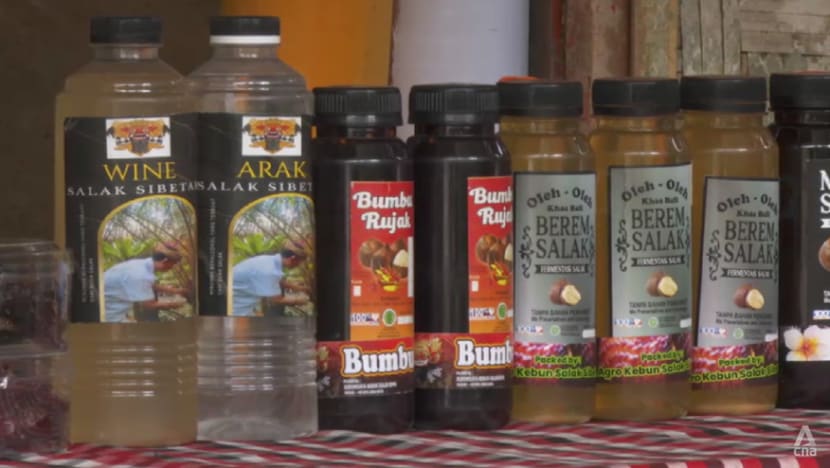 Products made from salak.
Products made from salak.
Agrotourism entrepreneur I Nyoman Mastra Kongking, for instance, produces and sells tea, coffee, wine and vinegar made from the fruit.
“Very ripe salak can be processed into a product with a longer shelf life (that) can be consumed well after the season has ended. We want to ensure all salak are useful and profitable for the future,” he told CNA.
Another local, Ni Wayan Srinik, owns a business pickling salak. Up to 16 tonnes of the fruit is processed after harvest at her processing facility, before being shipped off to Jakarta to be sold.
Wayan has been running the business with her husband for 30 years, but they only began brining the fruit in the past decade.
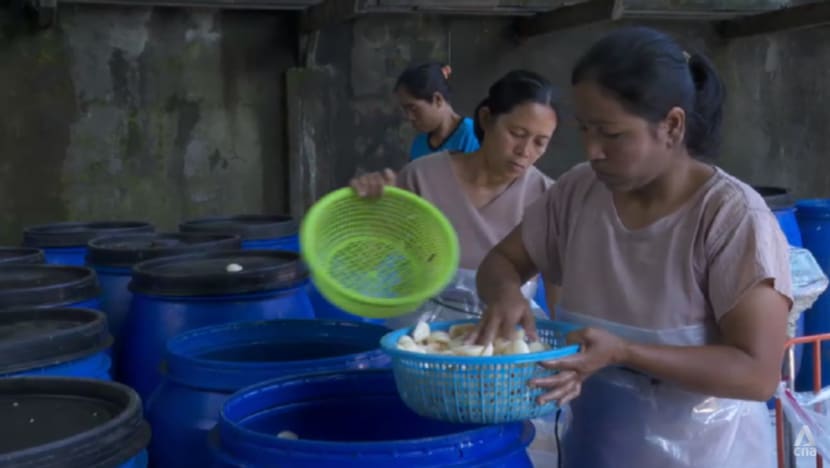 Locals brine salak fruit.
Locals brine salak fruit.
The preservation method has not only cut down on fruit wastage but ramped up company profits by between 5 and 10 per cent.
“Before we started brining the salak … only the large fruits were sent to Jakarta. The smaller ones were discarded. Now that we brine the fruit, we can process all sizes,” she said, explaining that small fruits used to be thrown out due to quality control.
Her business also provides opportunities for women in the neighbourhood to earn an income.
Putu Rustini, a neighbour, is among those recruited to peel the fruits before they are brined. She can peel up to 200kg a day, earning over US$10.
Farmers are hoping authorities would do more to ensure the price stability of the fresh fruit.
“Hopefully, the government and other relevant parties can help facilitate this matter to ensure a better future for salak production,” said I Wayan Wastika, head of Jungutan village.
NOT A WELL-KNOWN FRUIT
Despite innovations and recent recognition from the FAO, the push to boost the competitiveness of the Balinese snake fruit has yet to transcend local borders.
Microbrewery Islands of Imagination, for instance, which uses salak as an ingredient to craft one of its beers, has been trying to increase the sale of the brew to foreigners.
Its brewery is surrounded by salak plantations in Sibetan, and it is the first beermaker in Indonesia that uses locally-sourced ingredients.
“The sales percentage is still not that high because those from other countries are not familiar yet with salak,” said I Komang Alit Winarsa, the brewery’s supervisor.
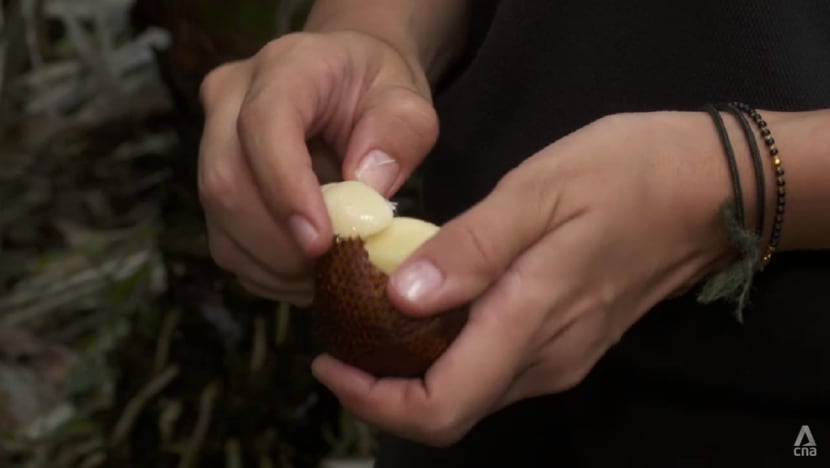 The edible white pulp of the salak fruit is crunchy, tangy, sweet and slightly acidic.
The edible white pulp of the salak fruit is crunchy, tangy, sweet and slightly acidic.
Authorities said that budget constraints, manpower shortage and a lack of awareness are slowing progress.
“At the central level, the challenge after cultivation is marketing,” said I Wayan Sunada, head of Bali’s agriculture and food security agency.
“From the economic, ecological, social and cultural perspectives, salak has a very high value and this is what we need to protect.”
PROTECTING LEGACY
The island’s authorities are making efforts to preserve the salak heritage for the future.
Schools in Sibetan customary village teach students how to plant snake fruit as part of a modified agriculture curriculum.
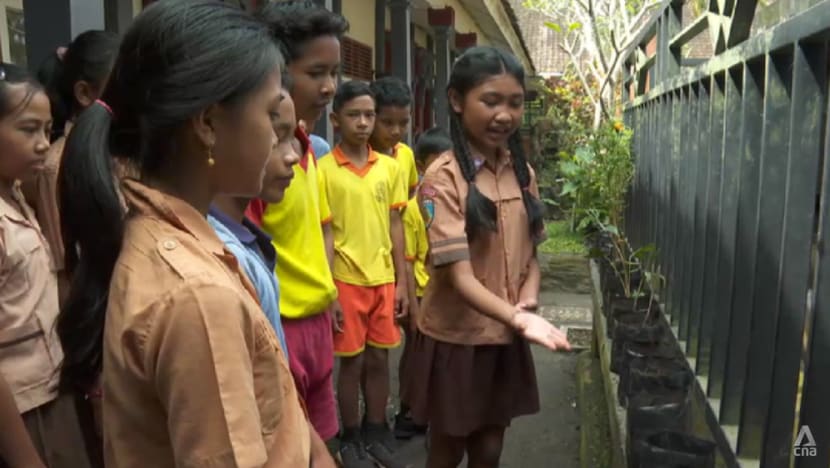 Students demonstrate how to plant salak palm plants.
Students demonstrate how to plant salak palm plants.
I Made Berata, a teacher at the SD Negeri 5 Sibetan primary school, said he hopes the lessons will motivate students to become farmers.
“(The curriculum) is an extra component so that the children will be proud of salak,” he said. “The majority of us here are salak farmers and we hope the younger generation will continue this practice and not be ashamed of being farmers.”
Entrepreneur I Ketut Latra said making farming smarter and more profitable can entice young farmers to get onboard.
“Providing superior seeds and good farming and cultivation methods that are in accordance with the standard operating procedures will guarantee their welfare and they can continue to be salak farmers,” he said.
He has been propagating snake fruit plants for over 20 years, cultivating variants that sell well in the market – like the primadonna sugar variant.
He sold 15,000 of the variant’s seedlings last year, with each certified seedling fetching more than US$1.50.
Authorities said they are taking the necessary measures for the sustainable cultivation of salak.
“We have tasked the agriculture agency with preparing a type of cold storage for the farmers which can help maintain the selling price,” said I Ketut Sedana Merta, regional secretary of Karangasem Regency.
"We have also prepared an action plan on regulations as well as how to protect, distribute and sustain local food, including salak.”
